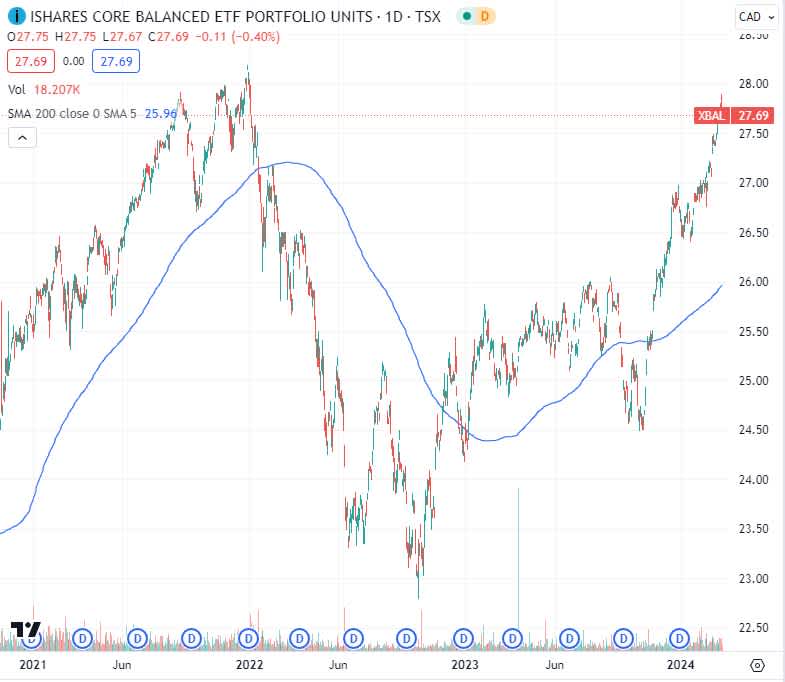2022 was a very difficult year for investors, the average balanced fund (according to Morningstar, the mutual fund and ETF analytics folks) experienced a negative return of close to -11%. Which was more negative than the 2021 average return was positive (+9.36%). And 2023 wasn’t enough to move the needle back up much either. Over the course of those 3 years, the average balanced fund had a total return of 3.6%. In Canada, meanwhile, the average rate of inflation over those 3 years was running at 4.7% (according to Statscan’s CPI data).
All of a sudden, your portfolio performance is not keeping up with inflation. For many, (investor behaviour being a very close relative of human behaviour) this experience sends up panic signals: “I can’t take the pain! Get me out!” In classic behavioural finance jargon it is called the “recency effect”: most will take the recent trend and project it to eternity.
IFIC, the Investment Funds Institute of Canada who measure the flow of money in and out of funds tells us that $30B flowed out of balanced funds in 2022 and that another $57B flowed out in 2023. Investors were throwing in the towel and wondering how they were going to get their investments to beat inflation now. Some determined that putting their money into GIC’s at 5% was the answer. FYI, after tax, still not ahead of that 3 year inflation average.
Fanning the flames, as always, were the so-called advisors, waiting in the wings with lots of “better ideas” to sell.
For those who stuck to their plan, allowed their portfolio managers to mitigate the downside and look for opportunities (value in the market weakness), 2024 is looking quite promising: stock markets (although we can argue their staying power) are doing better: generally at or better than 2021 highs and those “demon” bonds prices are once again elevating as the forecast for interest rates is lower.
So many conversations with clients and prospective clients over the last 6 months centering around the basics of bonds: as interest rates rise, bond prices may fall, but they will still mature at the price they were issued at (their par value), so it doesn’t matter if you bought a new issue bond at $100 and it fell to $90, it will still mature at $100 and pay you the coupon interest along the way. For those who were able to buy those same bonds at $90 when they fell, there is not only the coupon interest income, but a juicy capital gain of $10 to be had. Those capital gains are taxed at 50% of income. Can’t get that with a GIC. So while the “flavour” of the week or month or year in 2023 was GIC’s, there were much better opportunities in the world of bonds. And those bonds make up 40-60% of most balanced funds. So the balanced fund sellers were basically selling their bonds at $90, taking unnecessary losses. Shame! For GIC’s? Crazy!
Friends, the plan is for the long-term, stick to it. Don’t let the advisors who want you to chase returns talk you out of your long-term goals. The 10 year average for Canadian inflation (again StatsCan’s CPI) is 2.4%, Morningstar’s 10 year average balanced fund has returned 4.85% and that is plenty to keep your money growing ahead of inflation.
Let the portfolio managers (like us at High Rock) manage the risk and the returns will follow and your long-term goals will be achieved.
(chart at the top, source is tradingview.com on March 11. 2024)

